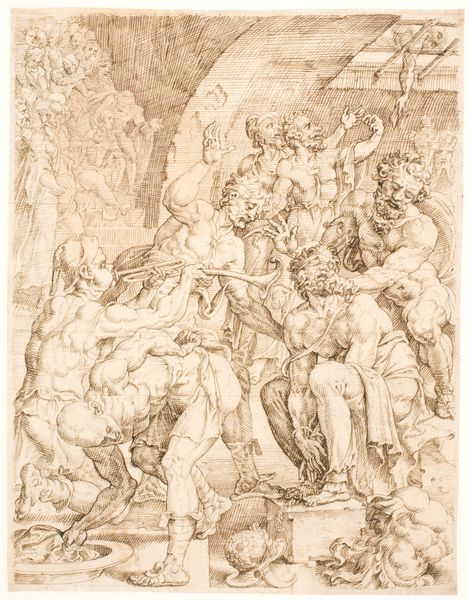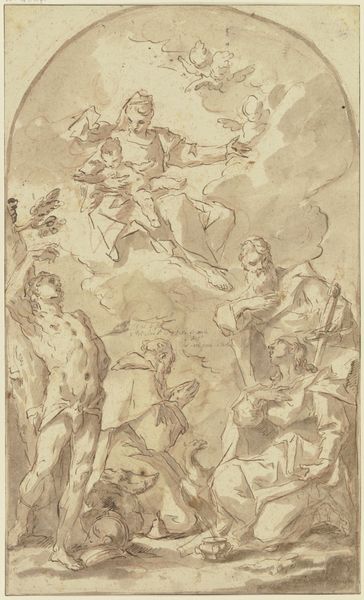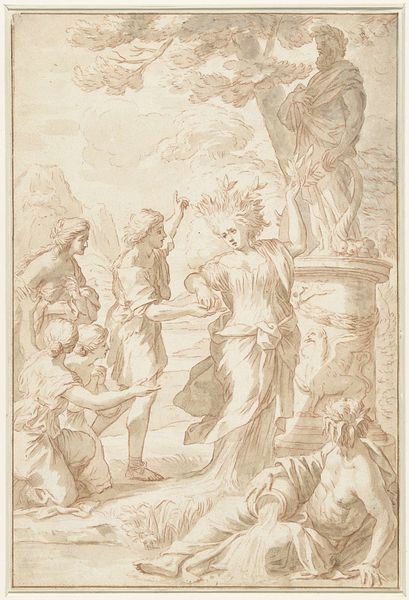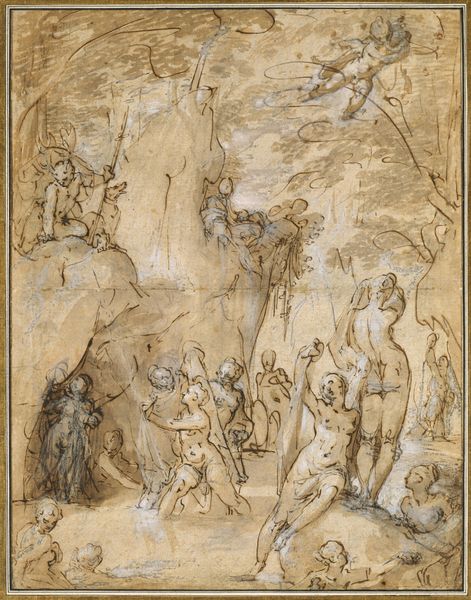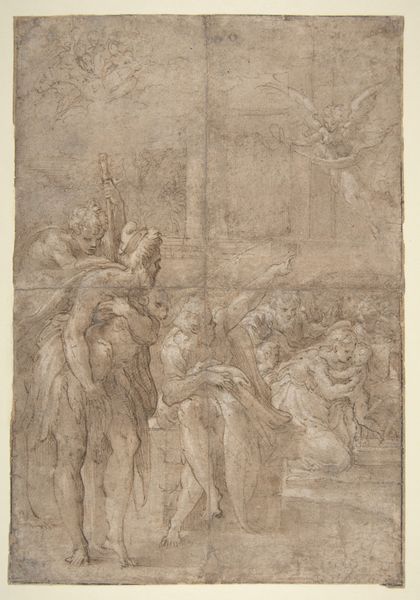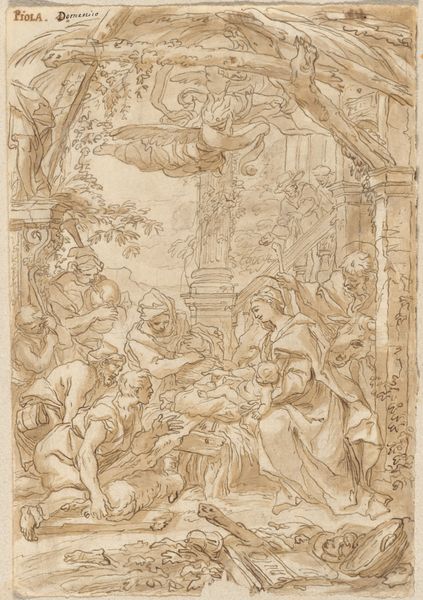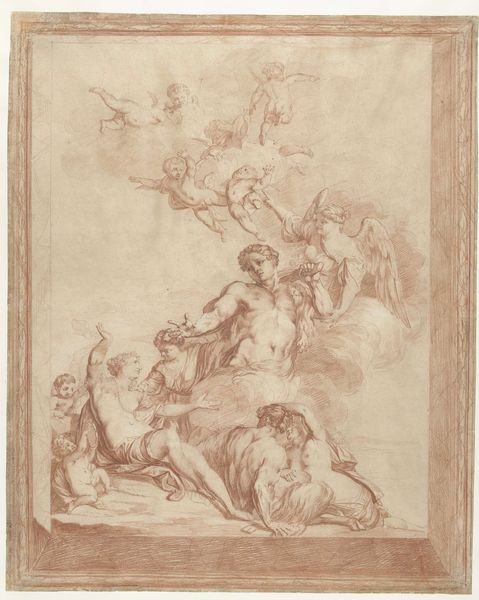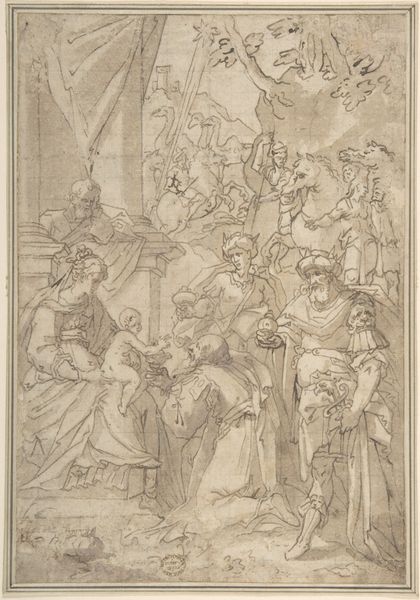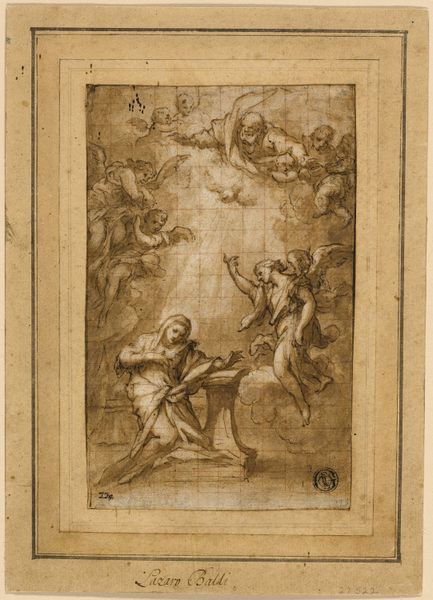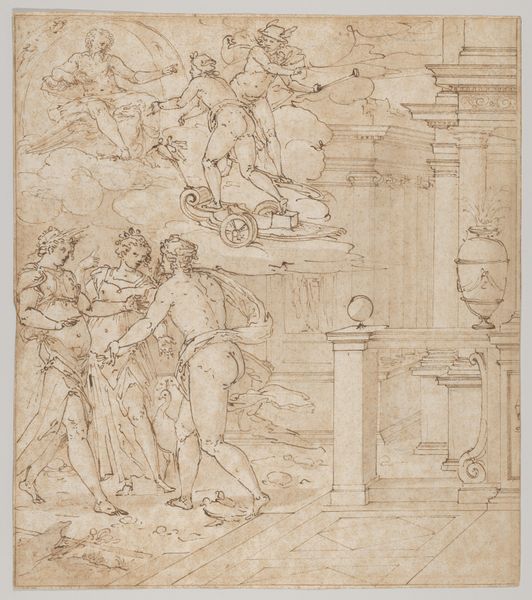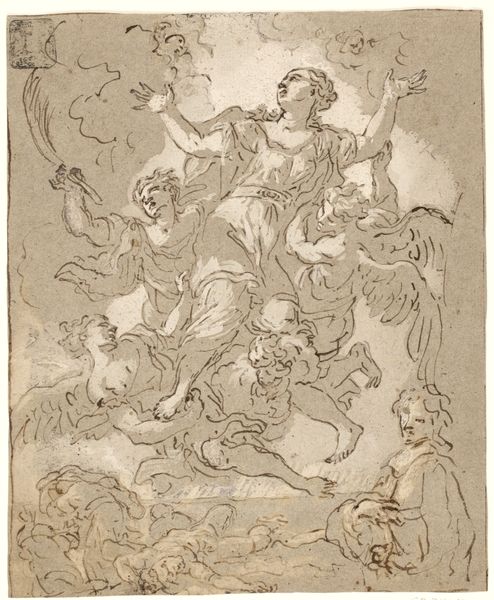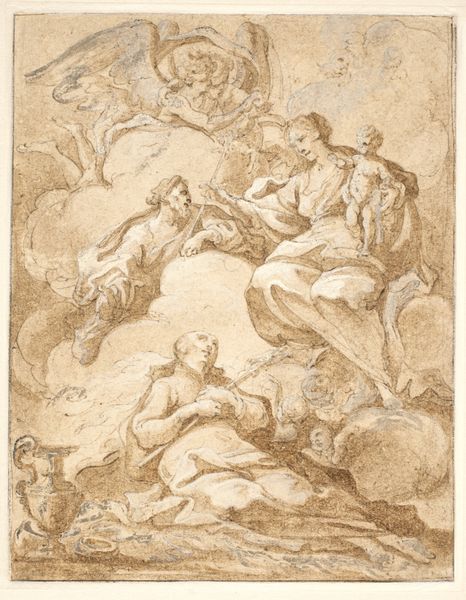
Beheading of Male Saint in Presence of Roman Ruler n.d.
0:00
0:00
drawing, print, paper, ink, pen
#
drawing
#
medieval
#
narrative-art
# print
#
charcoal drawing
#
figuration
#
paper
#
charcoal art
#
oil painting
#
ink
#
pen
#
history-painting
Dimensions: 253 × 185 mm
Copyright: Public Domain
Editor: This is "Beheading of Male Saint in Presence of Roman Ruler," an undated pen, ink, and charcoal drawing by Cornelis Schut, currently at the Art Institute of Chicago. The stark composition evokes a powerful, unsettling feeling, underscored by the figure sprawled at the base of what appear to be the Roman ruler’s steps. What can you tell me about this piece? Curator: This drawing plunges us directly into the messy nexus of power, faith, and resistance. Schut's image isn't simply a depiction of religious martyrdom; it's a visual statement deeply implicated in the sociopolitical tensions of its time, likely during the Counter-Reformation when religious identity was fraught with conflict. Consider the Roman ruler elevated on a pseudo-classical throne – how does this posture reflect both earthly and divine authority? Editor: So, you’re suggesting the setting and figures aren't just details, but actively contribute to this discourse about religious and political control? Curator: Precisely. How does the Saint's almost theatrical pose of submission—even inviting the violence—speak to concepts of self-sacrifice or a critique of imperial dominance? How do you read his passivity as either weakness or as potent symbolic protest against systemic injustice? It calls into question the active and passive roles we all play in oppressive structures, right? Editor: That's a really insightful point. I hadn't considered the active versus passive resistance dynamic. I was so focused on the obvious violence that I overlooked how his defiance is expressed through what seems like submission. Curator: Often in these historical depictions, the body becomes a battleground for ideologies. What might this Saint’s body, displayed in the moment of beheading, signify to diverse audiences depending on their societal context? Editor: Wow, framing it that way really opens up so many possibilities for interpreting the work beyond a straightforward historical account. Thanks for this critical perspective. Curator: Of course. And think about what historical accounts are permitted to survive while others are systematically excluded, particularly those that depict experiences of traditionally disenfranchised populations. We must strive to look for what is conspicuously absent.
Comments
No comments
Be the first to comment and join the conversation on the ultimate creative platform.
